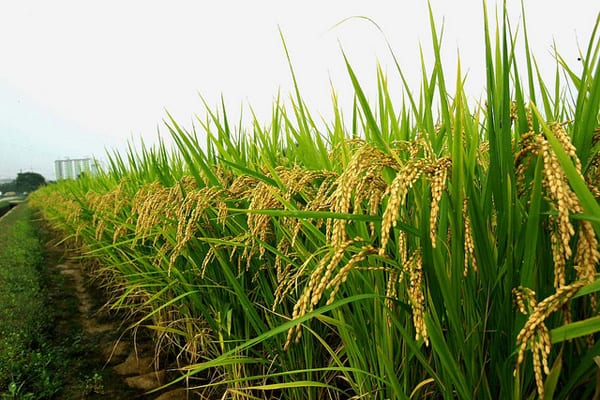By Kunal Bose
The challenge for both China and India, which have the world’s largest number of mouths to feed, is to ensure that further land degradation does not happen and the barren land is progressively recovered for farming. The two countries in their own ways remain engaged in the task even while China has an edge over its neighbour in wasteland recovery. Beijing continues to invest heavily in restoring barren and degraded land for farming, primarily through programmes like the “grain for green” involving financial rewards for farmers to plant trees. Such initiatives results in significant improvements in soil health. Whatever that is, bringing new land for agricultural use is a slow process as urbanisation, infrastructure development and building of industries will continue to lay claim on land.
Like in India where fragmentation of farm land ownership has left per capita ownership to a meagre 0.74 hectares, China too is beset with an identical problem. But as Dhanuka points out, Beijing is having success in consolidating fragmented plots by incentivising farmers to join cooperatives. “The resulting bigger units under cooperatives is allowing large-scale farming backed by use of modern technology. Large plots facilitating modernisation of agriculture has led to productivity improvement,” says Dhanuka. China being a communist country, whatever be the wish of the party is the law and farmers or otherwise will fall in line. On the other hand, the small farm landholders in India, a functioning democracy cannot be forced to pledge their land to cooperatives, whatever the merits.
During 2024-25 marketing year(MY), there was a marginal increase of 0.3% or 351,000 hectares in Chinese all grains land coverage to 119.3m hectares of which the share of rice was 29m hectares, wheat 23.6m hectares and corn 44.7m hectares. This coupled with improvement in yield, resulting from better farm practices and technology inputs, found China harvesting 207.5m tonnes of rice, 140.1m tonnes of wheat and 294.9m tonnes of corn. At the same time, overshadowing a 2% rise in corn production aided by increased planting of high-yield varieties, growers have to contend with toxin contamination. In view of bumper production depressing corn prices, imports were restricted to around 14m tonnes to give relief to farmers. Here too, Beijing, in pursuit of the policy to diversify sources of import, is buying larger quantities of corn of South American origin.
Expectedly because of the combination of high internal production and weak demand, Chinese wheat imports are likely to fall by 37% to 8m tonnes. MY 2024-25, however, saw rises in rice imports with purchases mostly made in Thailand and the balance originating in Myanmar, Pakistan and Vietnam. Relaxation of export restrictions by India led to improved buying by China. In the meantime, the US department of agriculture (USDA) says in view of falling global rice prices it has revised its 2025 forecast for Chinese rice imports upward by 200,000 tons to 2.2 million tons.
According to a recent Food & Agriculture Organisation (FAO) report, China’s total cereal import requirements for MY 2024-25 are forecast at a well-below average level of 37.5m tonnes in an indication of ample carryover stocks following large imports in MY 2023-24 and record cereal harvest in 2024. Incidentally, China is the world’s largest importer of cereals and its buy orders of wheat or corn leave an impact on global prices.
Dhanuka says, China’s food security law that came into effect in June 2024 is designed to ensure supply of grain and related products to the masses through a raft of initiatives, including farmland protection, limiting land conversion and supporting farmers’ income. He believes developing Asian countries seeking food security will do well to adapt a similar law, albeit making provision for local condition. To ensure that farmers are rewarded with prices for wheat and rice covering production cost plus a fair return, Beijing has in operation minimum support prices (MSP) for the two grains. MSP underpins food security by providing for government procurement and storing of grain.
Take the case of wheat whose wholesale prices recorded a steady declining trend through 2024. This was due to excess market availability from the above average harvest last year and also large imports in MY 2023-24. Prices in 2025 first quarter remained stable but at levels 15% lower year-on-year. State interventions in the form of buying wheat were required in some regions following prices of the grain falling below MSP. A guaranteed price and state procurement are good for farmers. Equally important is the way MSP for a season is decided providing enough incentive in the price prompting farmers to put their best foot forward in the season ahead.
Like China India too operates MSP, but its crop coverage is much bigger. For 2025, New Delhi will have MSP for 22 agricultural crops and also two commercial crops raw jute and copra. All this besides, India has in operation fair and remunerative price for sugarcane. Incidentally, India is the world’s largest consumer of sugar and its second biggest producer after Brazil. But Indian farmers are still in protest seeking legal guarantee for MSP, pension for farmers and farm labourers, no hike in tariff for electricity required for pumping irrigation water and redemption of prime minister’s promise of doubling income of farmers. The order of demands is something that the government finds it difficult to fulfil.
Good rains are what both China and India need for a good harvest sparing them shortages and inflationary pressure on farm products. This is in spite of both the countries having made substantial investment in irrigation facilities. While 50% of China’s arable land has irrigation, in India 73m hectares amounting to 52% of gross sown area is irrigated. The occurrence of an above normal monsoon (June to September) is helping India to achieve record production of rice, wheat and maize during the 2024-25 crop year (July to June), foodgrain production target being 341.55m tonnes. New Delhi claims that the continuous improvement in farm production is due to “raising application of high-yielding varieties, intercropping, crop diversification, better agricultural practices and securing more and more land for cultivation.”
Whether it is wheat, rice or sugar, India’s priority is to meet the rising local demand and keep domestic prices at a reasonable level. Exports, therefore, are always linked to surpluses. For example, New Delhi put a ban on wheat exports in May 2022 due to supply concerns and spike in prices raising concern of food security. Some government to government trade is, however, allowed. India lifted the ban on non-basmati white rice exports in September 2024, after previously banning them in July 2023, and also removed the minimum export price (MEP) of $490 per tonne.
At the same time, New Delhi reduced the export duty on parboiled rice to 10% from 20%. Export outlook for non-Basmati white and parboiled rice improved following the liberalising actions. Rice export ban happened to overcome domestic supply constraints and rein in prices. India is the world’s largest seller of Basmati and white rice, its annual shipments being around 18m tonnes.
Besides India, the other significant exporters of rice in Asia are Thailand, Vietnam, Pakistan, Myanmar and Cambodia. Helped by increased water availability giving a boost to productivity, the Thai rice production in MY 2024-25 will be marginally ahead of the year before at 20.1m tonnes. The country’s rice exports last year reached a six-year high of 9.95m tonnes, marking a 13% increase over 2023-24.Dhanuka says: “A strong brand recognition of its famed jasmine rice in the world market, care for quality, government support for exports and efficient supply chain management have helped Thailand to export half the production of rice.” (IPA Service)




 Political Ripples Of Passage Of Waqf Bill In Parliament Felt Across The Country
Political Ripples Of Passage Of Waqf Bill In Parliament Felt Across The Country 